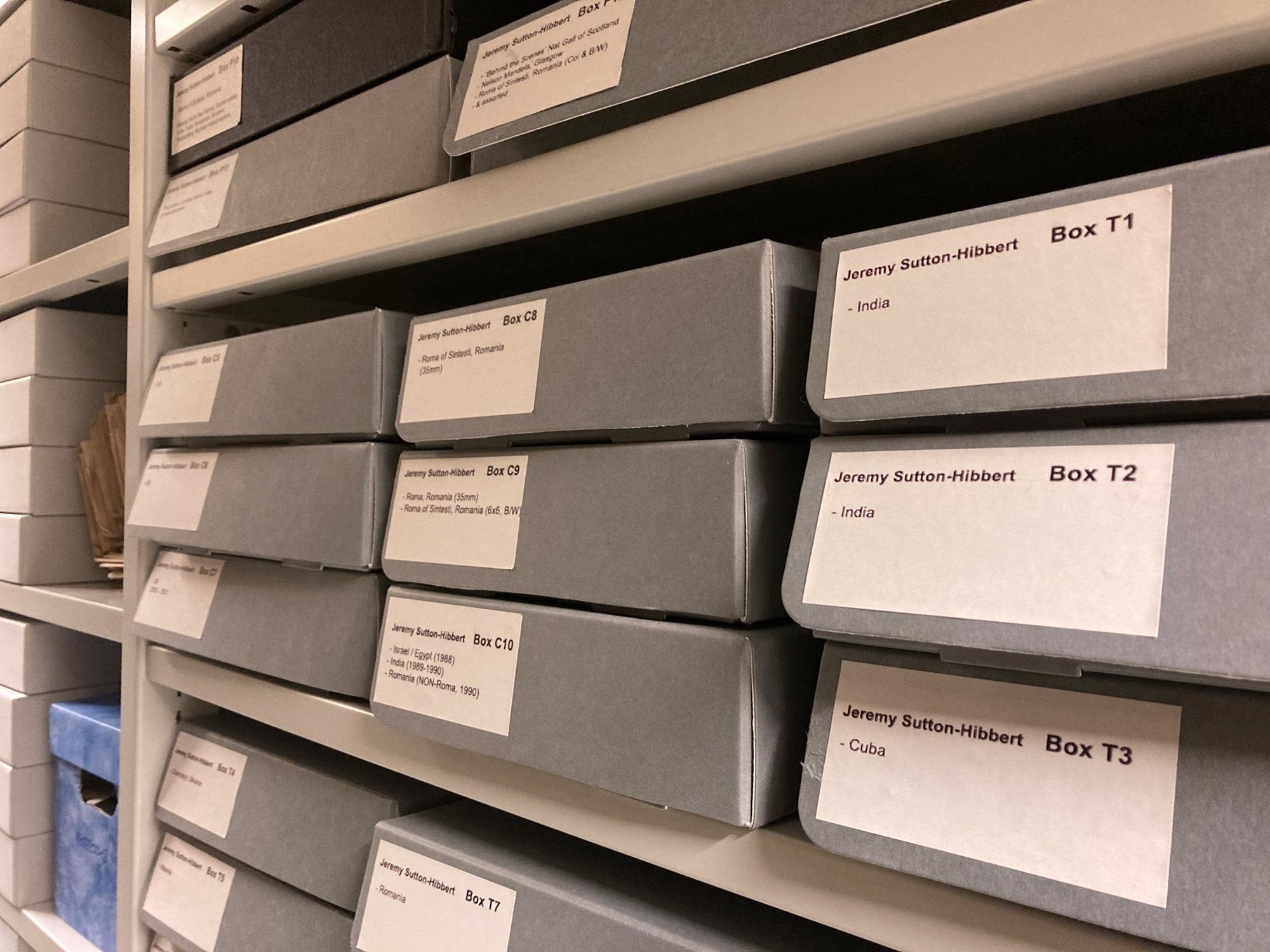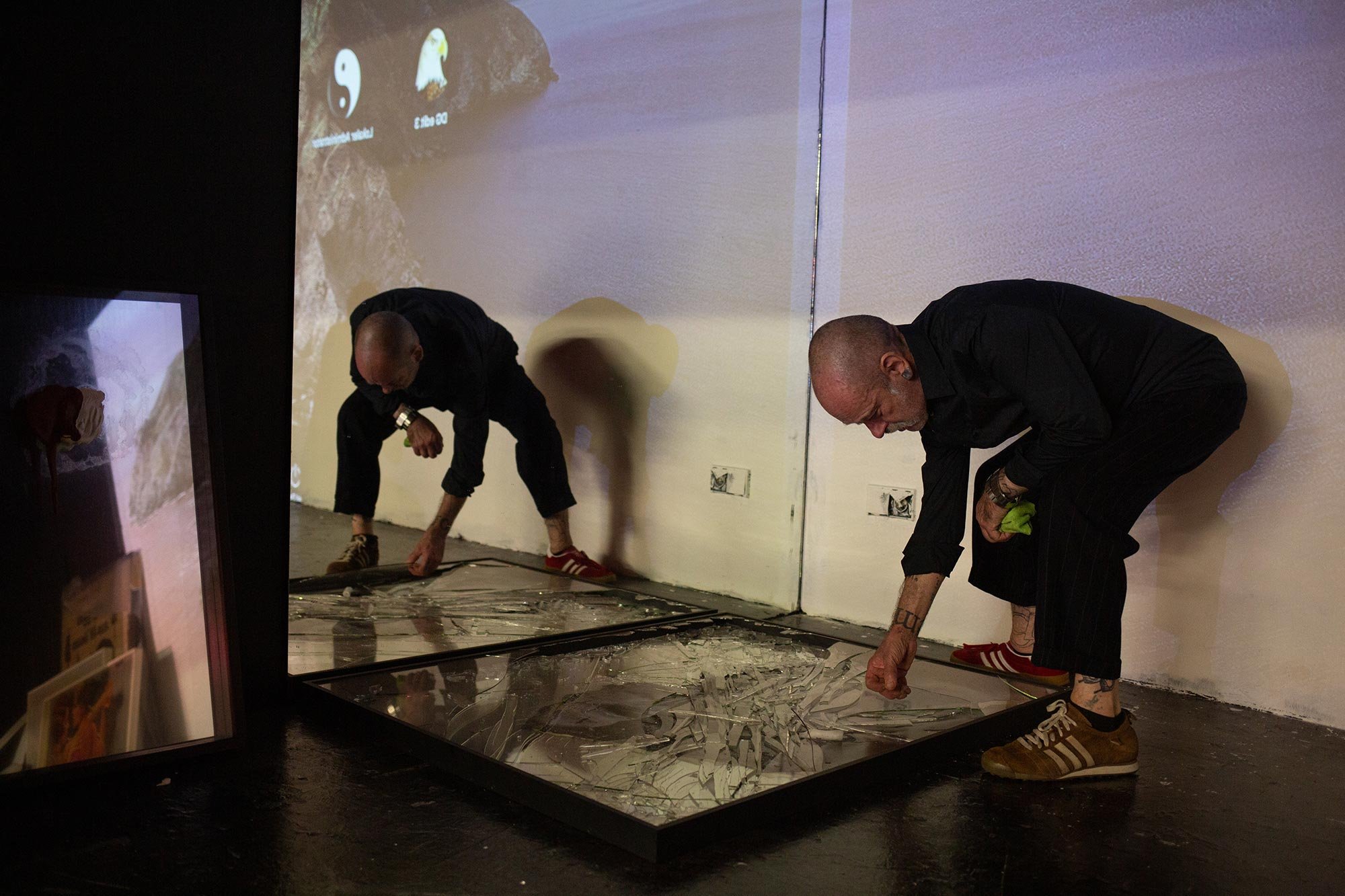“It is with great pleasure that we can announce the important acquisition of Jeremy Sutton-Hibbert’s archive into the Photographic Collections at The University of St Andrews.
This acquisition illustrates the social value of Jeremy’s work and the invaluable research potential within.
Jeremy’s is a vast archive and it contains endless potential for current and future generations of students and researchers.”
- Rachel Nordstrom, (former) Photographic Collections Manager in the University’s Libraries and Museums.
The University of St Andrews has been collecting photography since 1844 and today seeks to collect work by Scottish photographers as a visual document of Scottish culture. The University already held one of the largest and most important collections in the world.

As a proud Scot, and with a knowledge of the important contribution of Scots photographers to the world of photography, it was Jeremy’s wish that his collection of work, spanning the 30-years of his career to date, be held by a Scottish institution ensuring its accessibility to researchers, historians and the wider public.
Jeremy’s photographic collection consists of approximately 20TB of digital photography, comprising the RAW files of almost 1-million images all with captions, dates and keywords embedded. The edit of this work consists of approximately 20,000 images, including digitised versions of the most important stories from the work shot on film.
The collection also holds approximately 7,000+ pages of negatives newly housed and organised into archival boxes. Accompanying this are boxes of contact sheets, boxes of work prints and finished prints.
Boxes of tear sheets from his editorial career, with examples of his images as used in newspapers and magazines exist, as does the miscellanea of his 30-year career as a working photographer in Scotland and Asia.
From the world of Arts
Throughout his career Jeremy has photographed many from the world of the arts and culture. Such luminaries as playwrights Harold Pinter and Alan Sillitoe feature, as well as portraits of hundreds of authors including Dame Muriel Spark, Janice Galloway, Irvine Welsh, James Kelman, John Irving, Salman Rushdie, Martin Amis and many more. In Japan, Jeremy photographed Nobel Prize winner for Literature Kenzaburo Oe, and best-selling author Haruki Murakami.
As a newspaper photographer Jeremy attended many music festivals and concerts, photographing bands and performers such as Sex Pistols, Oasis, Spice Girls, James Brown, Van Morrison, REM, Bjork, Elvis Costello, Morrissey and more.
From the world of photography and art he has shot portraits of Glasgow photographer Harry Benson, and over 125 artists of Scotland including Douglas Gordon, Jim Lambie, Alison Watt and Adrian Wiszniewski.
In the world of design and fashion, as reportage and portraits Jeremy worked on assignment photographing Dame Vivienne Westwood for The Sunday Times; Karl Lagerfeld of Chanel, in Tokyo, for The New York Times Magazine; and British design guru’s Sir Terence Conran and Paul Smith.
Politics through the lens
In recent times Jeremy undertook a daily reportage documenting the two years of campaigning prior to the 2014 Scottish independence referendum, including portraits and work with Alex Salmond, Nicola Sturgeon, Alastair Darling and more.
In 1993 Nelson Mandela was awarded Freedom of the City in Glasgow, and Jeremy documented the visit, as well as that of Soviet Premier Mikhail Gorbachev to Aberdeen.
Politicians such as Nicola Sturgeon, Kate Forbes, Jeremy Corbyn, Sir John Major, Tony Blair, Ian Lang, Douglas Hurd, Tam Dalyell, and more, feature within the archive, as a mix of portraits and reportage.
Foreign leaders also appear, with Fidel Castro of Cuba, Slobodan Milosevic of Serbia and Franzo Tudjman of Croatia, President Ramiz Alia of Albania, Francois Mitterand of France (in Edinburgh), being the stand out names.
Reportage of Scotland
Jeremy is perhaps most thought of as a reportage photographer, and over the years of his career has undertaken photographing stories on a variety of topics, both as self-initiated projects and also commissions for clients.
Topics and sets of images include Shipbuilding on the River Clyde; trips in the early 1990’s aboard seine-net fishing boats in the North Sea; Stag Hunting on Jura; assignments for magazines to photograph the East European Klondyker fishing ships working off Shetland.
Orange Walks in the West of Scotland feature, as well as reportages on drug abuse and prostitution in Glasgow.
Reportages looking at football culture in the west of Scotland are represented by a look, in black and white, at the Fergus McCann-led take-over of Celtic FC in the 1990s; and in recent years Jeremy followed the team and fans of Rangers FC through the lowly 3rd division for the 2012-2103 season.
In 2012-2014 Jeremy photographed the Common Riding festivals of the Scottish Borders, in a mix of reportage and portraiture, culminating in the photography being shown at the Scottish National Portrait Gallery and self published as a book.
Reportage Abroad
As well as photographing within Scotland, Jeremy has photographed extensively abroad.
Topics within the collection comprise of his work for environmental NGO Greenpeace International, covering protest against the Japanese whaling fleet, in the Southern Ocean in 2002 & 2005; Illegal Tuna fishing in the South Atlantic; Illegal logging of Papua New Guinea rainforest, and in Sumatra, Indonesia; and rising sea levels in Kiribati and Carteret’s Atoll, Papua New Guinea.
Away from environmental stories, Jeremy photographed Albania in the post-Communist transition years, in the early 1990s., using his grant as recipient of the Felix H. Man Memorial Award. Trips and assignments include work from Cuba where he photographed Fidel Castro in 1993; life on the streets of Manhattan in the aftermath of 9-11, at Ground Zero, New York, 2011; and as a photojournalist based in Tokyo he covered extensively the 2011 Tohoku disaster with the earthquake, tsunami and nuclear disaster.
One of Jeremy’s most extensive and well known projects has been his recording of life in the Roma settlement of Sintesti, Romania, shot over a 30-year period from 1990-2019. This body of work which documents the transition from the Communist years to the embracing by the Roma of Western consumerism, comprises over 650 rolls of film, along with digital images, and even super-8 cine footage of Jeremy at work in the early 1990s.












